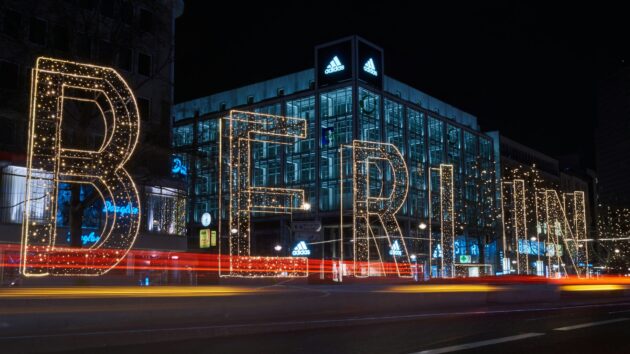
“Story” isn’t in the word “history” by accident. The life experiences of one person are passed on to countless others over time. Repeat this process again and again on a global scale and you’ve got history. Ancient kings. Ruthless conquerors. Everyday people just trying to get by. All of their stories will continue to live on long after they’ve passed away. It’s his story, it’s her story, it’s our story because the same will happen to us eventually.
The very city of Berlin, Germany has countless stories to tell us. About itself, about its citizens, about everything you could possibly think of. Berlin doesn’t speak through words; instead, Berlin speaks through its monuments, its museums, and its culture. Some might have a hard time understanding the city, but history buffs will feel right at home.
This adventure takes you on a History Buff’s Guide to Berlin. The purpose of this guide isn’t to teach you everything there is to know about Berlin. That’s something that simply can’t be achieved with one visit. No, the purpose of this guide is to stir something inside of you — to urge you to learn more about the city and its history in your own time. Before you set out on your trip, drop your heavy gear and bags at a Berlin luggage storage locker.

Table of Contents
Berlin Wall
Back in the 1960s, Germany was divided into two districts; Western Germany and Eastern Germany. We don’t just mean divided in a figurative sense, by the way. The German Democratic Republic erected a nearly 12-foot tall border that separated West and East Berlin.
From 1961 to 1989, the Berlin Wall separated families, friends, and countrymen. Now, only a few pieces of the Berlin Wall remain. These remnants are scattered all throughout the city and have been coated with pro-peace and pro-reunification graffiti. What’s left of the wall serves as a reminder of the German Democratic Republic’s impact on Berlin, and Germany as a whole.
Brandenburg Gate
Back in the day, Berlin used to be surrounded by a series of city gates. By “back in the day”, we mean the 18th Century. By “city gates”, we’re talking about dozens of massive stone structures. The Brandenburg Gate is one such structure. King Frederick William II had the gate built in a Neoclassical style sometime between 1788 and 1791. Just like the Berlin Wall, the Brandenburg Gate is considered to be a German national landmark and a reminder of Berlin’s checkered history.
Gendarmenmarkt
What’s a famous capital city without a famous city square? Berlin actually has several popular public spaces, but none are quite like Gendarmenmarkt. What do we mean by that? Well, Gendarmenmarkt is flanked by an array of famous German buildings. We’re talking about sites like the Neue Kirche and the Konzerthaus.
As far as souvenir shopping goes, you probably won’t find a better place to snag some swag in the entire city. Gendarmenmarkt also hosts several major festivals and events, like the annual Classic Open Air. Last but not least, this place is simply picturesque. Tons of visitors take photos at Gendarmenmarkt at the start and end of their trips.
German Historical Museum
German history is incredibly complex. If you don’t take anything else away from this guide, we hope that much sticks with you. It’s not easy to codify centuries of past events for any nation, but it’s even harder when the world tries to paint you in a very specific light.
Regardless, the German Historical Museum tries to provide a comprehensive understanding of Germany’s intricate past. This venue is filled with artifacts from past eras and exhibits dedicated to recent events. In other words, it’s a history buff’s paradise.
Memorial to the Murdered Jews of Europe
The Memorial to the Murdered Jews of Europe is very much in line with the theme from our last entry. It exists to honor the memory of the countless Jewish victims of the Holocaust. Many people are split about the memorial; some feel that it doesn’t do enough to honor the deceased while others feel that it does too much.
There’s another perspective, however; the memorial probably shouldn’t be viewed as an end-all, be-all. Rather, it could be viewed as an attempt to acknowledge and learn from a dark park of Germany’s past. History buffs will ultimately have to come to their own conclusions, but they’re encouraged to visit nonetheless.
Museum Island
The arts are an integral aspect of German history, let alone Berlin. Maestros like Beethoven and painters like Caspar David Friedrich hail from Deutschland. Museum Island exists to pay homage to these iconic artists. As the name implies, Museum Island isn’t just one venue — it’s a complex that houses several popular museums and exhibits. You can learn about art, music, history, and more from a visit to this popular venue. Honestly, you could probably spend an entire day exploring Museum Island.
Deutscher Bundestag
The Reichstag Building is the house of the German Parliament. It’s certainly worth a visit when you get the chance, but that’s not the attraction we’re talking about today. No, we actually want to discuss the Deutscher Bundestag, that sparkling dome on top of the Reichstag Building. Guests can visit the Bundestag after paying a small fee. The view that you’ll get at the top of this see-through dome is well worth the price.

Sanssouci Palace
Sanssouci Palace is one of Frederick the Great’s Summer homes. To be specific, it was actually his favorite home and the place that he spent the most time at, aside from his castle. These days, guests can visit the palace and frolic in its verdant fields. Sorry, it’s hard not to wax poetic when you’re talking about a place like Sanssouci Palace. It genuinely looks like something out of a storybook or a fairytale.
